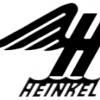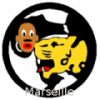Search the Community
Showing results for tags 'Krupp'.
-
After the Sherman Calliope vignette i wanted to build something else. I mainly do ww2 tanks and diorama's but while i was digging around on the internet for a new project i came across this beauty: The Krupp M-gerät 420mm also known as Big Bertha. A siege gun designed by Krupp to destroy fortifications. These guns were mainly used by the germans on the western front during the first years of ww1. The gun is massive! Original size was about 4,5 meters high and more then 10 meters in length. To give you a bit of a perspective: here is a tiger 1 standing next to the first part of this build. In typical Takom fasion the quality of this kit so far is very good. The only thing that requirers attention are some seamlines on the parts that have to be removed. Other then that no issues so far. The kit is big and so are all the parts. It almost feels like building in 1:16 scale. This build will become the main part of a WW1 diorama. Right now i'm searching for some good figures to go with the model and i want to add some extra ammo so tips on finding 420 mm shells in 1:35 scale are welcome. Feel free to tag along. Cheers guys!!! ( yes the title is a Monty Python quote )
-
Thought I'd share some pictures of my Krupp Titan build's status quo. Wiring and piping, decals and a few things more were scratched. The engine is a fast CA-glue-fit (later on I'll explain why) and will be completely refitted later. The chassis was extended twice, about 2 inch total. One example:
-
Hello, It's been a while. Have been busy doing some work around the house again, modeling two rooms with nice effect, but finally managed to finished this German Truck. This was my first go on an ICM kit. I was really surprised by the number of details but then while working on the chassis I started to wonder how on earth did they managed to mould such thin parts and.. why would you do that anyway, as you basically can't see anything when model is completed.. This is one of these models you may label "overengineered". One more problem was with fitting the larger parts with each other, like cabin to the chassis.. Decided to put it on a small base: Enjoy: Now some big beast on the workshop - T90! Yeah! Thanks, Bart
-
Hi all, This is my first post on Britmodeller and 4th model since I started with this hobby again after a 15 year hiatus. I picked up this model in Sydney when I was there on holiday and thought it would make a nice change from my usual forte of aircraft modelling. Built OOB. The model goes together nicely and there were only one or two fiddly bits that frustrated me (I broke the wing mirrors). Painted with Tamiya acrylics and weathered using art pastels mixed with a bit of Future, and bit of airbrushing for a dustier look. I applied the salt chipping technique for the rust on the bonnet, more for a bit of fun than because it belongs on the model. The figures were a bit dismal, with seams all over the place and by this late stage I was losing interest. The decals are mercifully few (an advantage of armour modelling over aircraft modelling) but I still managed to cock them up (note the poor fit of the number plate). Anyway, that's enough rambling. Here are some pics. Comments and criticism most welcome. Cheers!
-
Hi Friends I present this utility truck used by the German Armed Forces from mid 30 until the end of World War II. Armed direct of box, all improvements and details are home made, painted with Model Master and Tamiya paints, pigments K4 (chilean manufacturing) and MIG. Cheers, from warm south
-
8.8cm Pak-43 Waffenträger Self Propelled Gun 1:35 Trumpeter The Waffenträger was part of the Entwicklung series of Armoured Fighting Vehicles that were supposed to standardise the vehicles used by the German fighting forces toward the end of WWII. It was a self-propelled gun that was based on an extended Czech 38(D) chassis, and built at the Ardelt works in Eberwalde using a Krupps 88mm Pak 43. Like the rest of the Entwicklung series though, it was too late to see serious action in the closing days of the war, although one or two did actually manage to reach the battlefield if accounts are to be believed. One surving example can be found at the Kubinka museum in Russia, dressed in a rather garish camo pattern, although contemporary pictures seem to show a single dark colour. As mentioned, it was based on the almost ubiquitous 38(D) chassis that served the Germans throughout WWII in one form or another, with an armoured driving compartment at the front, while the rest of the chassis was given over to a flat base for the Pak 43 and crew. Clearly, it was not capable of carrying its operating crew, who would have had to follow it into action in another vehicle, and during battle they would be quite exposed to attack from the side as the gun shield doesn't provide much cover to fire coming from any direction other than the front. The gun shield was sharply angled though, which did provide extra effective thickness to the plate, although with a number of shells stored in a box attached to the inside of the shield, that might be moot if the shot detonated the rounds. The Kit The kit arrives in a standard Trumpeter box with a slight corrugated surface, and a nice painting of a Waffenträger in action, doing terrible things to T-34s that seem oblivious to their presence. Inside the box is an impressive array of parts, including ten sprues of sand coloured styrene, lower hull part, ten small brown sprues of track links, six sheets of Photo-Etch (PE) parts, a steel tube, a turned aluminium barrel, and a set of decals. The instruction booklet and separate colour painting guide finish off the package. When you consider that this kit retails for less than £30, that's quite a haul, and for most people, that will be sufficient for their needs. Construction starts naturally enough with the suspension units being attached to the hull, and here the pre-war heritage of the 38(D) shows through, with simple leaf-spring bogies each holding two wheels, with a total of eight road wheels in four pairs, two per side. These are a simple stamped construction and have hollow backs that mimic the real thing. The idler wheels are at the rear of the chassis and are paired to avoid slippage of the track, while the drive sprockets at the front are similarly paired and attach to a small final drive bulge. The completion of the wheels on this kit won't take long as a result, and the absence of rubber tyres due to the shortage of this strategic material during the final years of the war makes that task even easier. The tracks themselves are made up from individual links that are housed on ten small sprues that contain 23 links each. Each link has four attachment points, which will slow removal and clean-up, and there is a single recessed ejector pin mark in the inside-middle of each one. Whether you clean these up with a little putty, leave them and cover them with mud or leave them and hope no-one notices is entirely up to you, but filling and cleaning up 206 small links in total is a job for when you can safely disengage your brain. There is a rudimentary interior provided with the kit, although rudimentary is perhaps a little unkind. The basics are all there, including the driver's compartment with seat, pedals and controls, plus some details of the engine compartment that is visible from the side of the driver's position, with some levers and a representation of the engine cooling fans, which would have made the driver's seat heaven in the winter and hell in the summer. In the rear compartment under the gun deck, is stowage for the Pak-43's 88mm ammo, which is made up of three layers of four shells offset to fit within the available space. The shells are all moulded on four sprues that are a wide dog-bone shape, and contains eight full rounds, and eight spent rounds with a slide-moulded hollow neck to the cartridge casing. Each shell has a corresponding PE percussion cap that adds a little extra detail to the area, and saves you from having to fastidiously clean up one attachment point per shell. Of course each shell has one sprue gate to clean up on the side, and the obligatory seam to scrape away down each side, but the resulting shells will look good with a coat of brass paint on the cartridge end. When dealing with the upper hull, there is the option to cut off the moulded in styrene fenders and install a pair of more realistic PE fenders that are made up from quite a number of parts. This not only gives a more scale thickness to the area, but also a little more crisp detail that is difficult to represent in styrene. The angled ends of the fenders are also provided as PE, and would benefit from being soldered into place to add some strength. If you elect not to use these parts though, you can ignore this whole paragraph and leave the parts ensconced in the box for another day. The hull top drops onto the lower, and the large square hole in the top matches the crew cab, which is a separate part and drops on top, with the instrument panel and bulkhead detail inside. At the rear a large panel fills the remaining void, with two extra lift-out panels within to access the shell repository, plus a whole host of lifting and towing eyes festooning the rear, with a low crew step that would make retrieving the shells from the store easier. The access panels can be replaced by folded PE parts, which would look good if you felt like leaving them open and scratch building the rest of the internals. A thick armour plate attaches to the sloping glacis plate, and the exhaust loops round the back of the cab, exiting on the front of the starboard side. More lifting eyes attach to the front, as well as a large louvered panel for the cooling system, with a matching panel at the rear of the cab for throughput of cooling air. Running lights, jack block and more lifting eyes attach to the front, along with the huge single-part travel-lock for the long 88mm barrel. The final part is a folding bullet screen to the front of the driver's compartment, which is otherwise open to the elements come rain or shine. Building up the Pak-43 is a large part of the construction process of this kit, and care must be taken due to the choice of PE or styrene gun shield, mantlet and other parts. The first section deals with the mount, and then the breech is built up with all of the large cast and machined parts that make up the loading mechanism and breech block. The elevation rams simply slide inside eachother allowing the barrel to move freely after building (if you wish), whilst pivoting at the rear aft of the gunner's chair. A ready-ammo box is made up from a single large sheet of PE that is bent to shape, and six shells are placed inside with their PE firing caps. The next steps cover the creation of the realistic two-layer gun shield out of either PE parts, or the easier styrene alternative. Personally, I would go for the PE parts as they look more in-scale when completed, and if you aren't experienced with PE and make a hash of it, you've always got the styrene parts to back you up! The PE shroud has 30 tiny styrene spacers to add between the two layers, which I assume is to help reduce spalling from incoming small arms rounds, as the gap is too small to be of much use in the event of an RPG hit. Various styrene and PE fixtures attach inside the shroud, as well as the aforementioned ready-ammo box, although the styrene alternative shield has a lot of these moulded in. Joining of the shield with the breech is accomplished by mating all of the stand-off bars with their sockets on the shield, after which the barrel can be added. Here again you have the choice of a very nicely turned aluminium barrel with a brass tube extension piece, or a styrene barrel made from two halves, but whichever option you choose, you will need to make up the flash-hider from two halves and hide the seams well before painting. The Mantlet can either be made from styrene or PE, with the PE requiring a few bends and the addition of some small detail parts before it is complete. The Mantlet's position on the barrel is given from both side and front views in scrap diagrams underneath the construction step that deals with its fitment. The final task is to bring the two assemblies together and add one single piece to the rear of the attachment point. The painting and marking guide gives only one scheme, which is Dunkelgelb with schokoladebraun patches. The sky is the limit though, as proving that any particular scheme was or wasn't used will be tricky, unless you head straight for a more concept based camo scheme. To assist you with your deliberations and flights of fancy, a set of generic decals is included, which provides yellow and white kill bands for the barrel, plus two of each numeral in red with a white border from 0 to 9, and black balkenkreuz with white borders and the more simple white ones. A decal for the driver's instrument panel is also included to detail up the panel fitted during the build, which has a Panzer Grey background and two main instruments in white with black details and red danger warnings. The decals seem of good quality, are in register and the colour density seems good on the sheet. Paint call-outs are given in Trumpeter's usual Gunze, Vallejo, Model Master, Tamiya and Humbrol colours, which should make it possible to convert to just about any major paint brand. Conclusion If you like late war German tanks of the Entwicklung Waffe'46 genre, this is a great kit to add to your collection. Even if they are not usually to your taste the shape of the vehicle with its high angle of rake to the gun shield makes for an attractive and purposeful looking finished model, but once you see the level of detail in the box at such an attractive price point, it is quite a simple decision to make. Highly recommended. Review sample courtesy of
-
- 1
-

-
- Adeltwerke
- Waffentrager
-
(and 4 more)
Tagged with:







